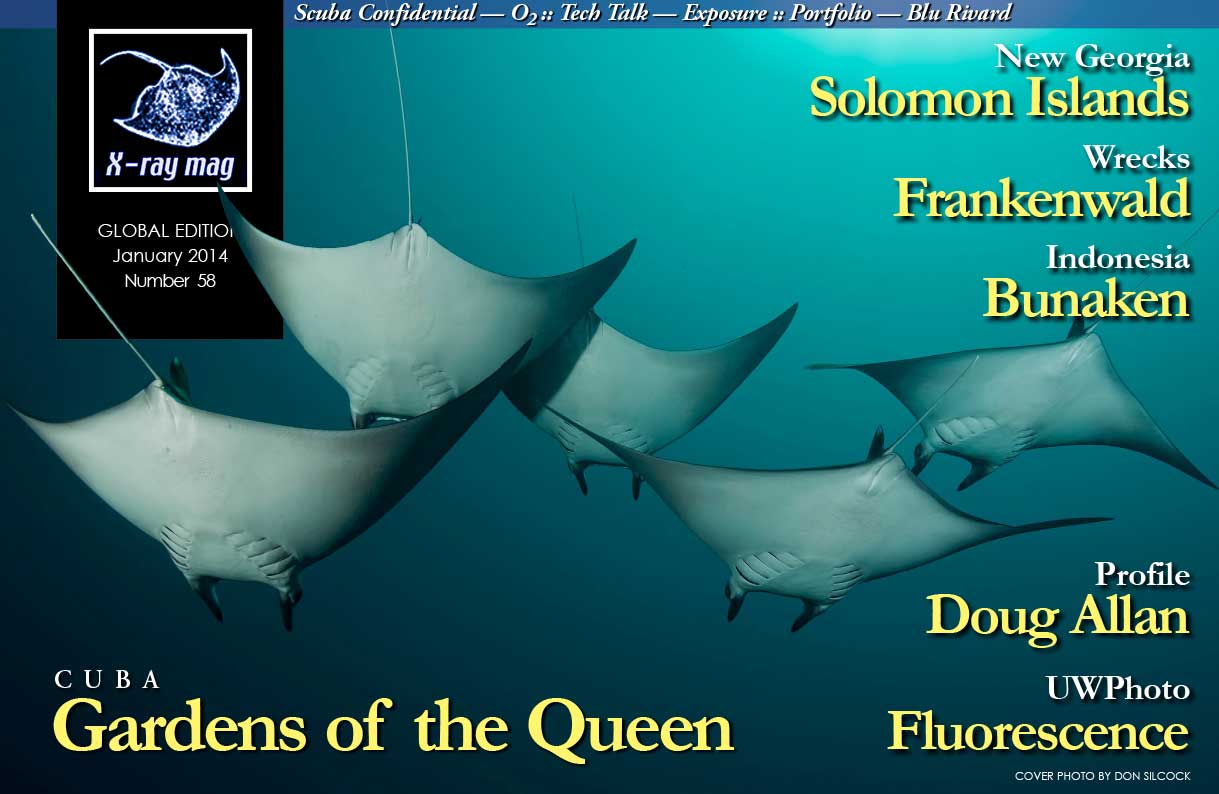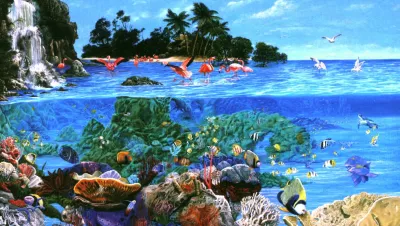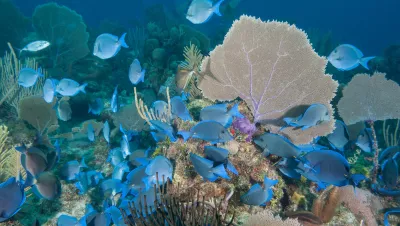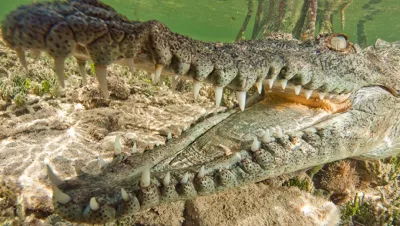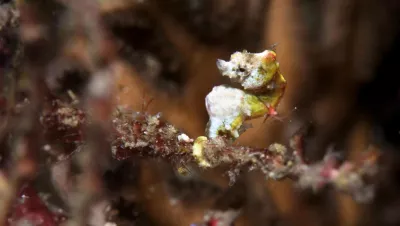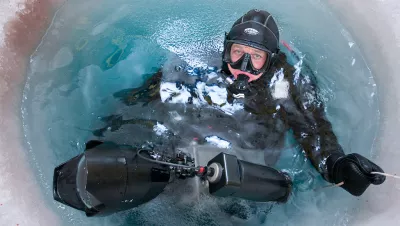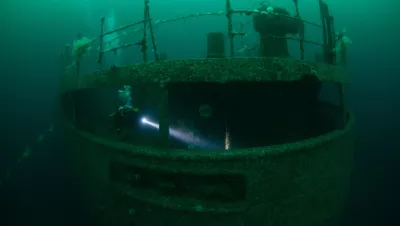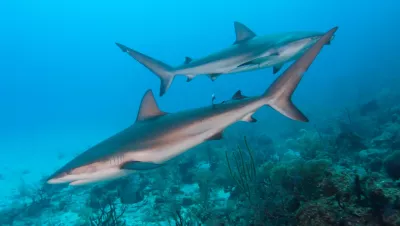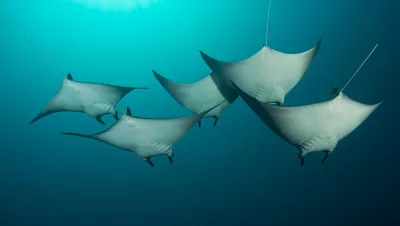Based in Southern California, American artist Blu Rivard is passionate about the underwater world—a realm of wonder which he captures in vivid oil paintings on canvas. An avid scuba diver, he found inspiration for his art in his diving adventures in places such as Australia, Asia and islands of the South Pacific. His passion for the beauty of life in the sea led to a desire to help protect the oceans and the fragile ecosystems of the reefs
X-Ray Mag #58
X-Ray Mag Global edition ~50 Mb
Feature articles in this issue with stand-alone pdfs
As the wheels touched down at Havana’s International airport, the plane erupted with cheers and applause. Many of the passengers on board had waited years, if not decades, to return home and visit relatives in Cuba. As part of a small group of Americans visiting for the first time, I knew immediately that we were in for a special treat.
Traveling on permits from the U.S. Department of Treasury, we were embarking on a People to People Educational Exchange program, focused on ocean conservation, research and ecotourism—the first of its kind to allow U.S. citizens to legally travel and scuba dive in Cuba.
The Cuban government is environmentally minded. In 1996, the 837-square-mile marine area and archipelago of Gardens of the Queen located south of the main island of Cuba became a no-take reserve—the largest in the Caribbean—and in 2010 was designated a national park.
We’re swimming fast. Too fast for my liking. I’m taking heaving gulps, and I know my tank won’t last very long if we don’t slow down soon. Just as I’m about to stop and risk losing my group, we hear a rapid series of bangs coming from our dive boat in the distance. Our guide, a lithe Indonesian with pistons for legs and bottomless iron lungs, points into the blue and somehow quickens his pace.
You might know Doug Allan because of his spectacular cinematography. In his 30-year filming career, he’s been involved with over 60 films and series, and has worked for BBC, Discovery, National Geographic and many others, filming on series such as The Blue Planet, Planet Earth, Human Planet and Frozen Planet.
His photographic awards include seven Emmy’s and four BAFTA’s. He has twice won the underwater category in the Wildlife Photographer of the Year and was awarded the Royal Geographical Society’s Cherry Kearton Medal for his wildlife images. Last year, he was made an Honorary Fellow of the Royal Photographic Society.
The Royal Mail Ship, Empress of Ireland, was an ocean-going luxury liner on her way to Liverpool from Quebec City when she sank in the Saint Lawrence River, 14 minutes after colliding with a Norwegian collier in the early morning fog of 29 May 1914. She had 1,477 people on board—passengers and crew—and the accident claimed the lives of 1,012, more than 800 of them passengers.
I’ve had the privilege to dive on the wreck several times; the first was in the aftermath of Hurricane Hortense, which blew its way up the eastern seaboard of North America, and although it did not hit Rimouski directly, turned that late Quebec summer into a mini-maelstrom.
Fluorescence night dives, or fluoro, UV and glow dives, as they are also known, are becoming increasingly popular as more and more dive centres offer scuba divers and underwater photographers the chance to experience this unique underwater phenomenon.
There are also an increasing number of vendors offering diving equipment for use on these special dives, and the purpose of this article is to explain the basics, background, techniques and equipment associated with this interesting aspect of the underwater world.
On 6 January 1940, the German freighter Frankenwald was caught in a treacherous current on the Norwegian west coast. With a deafening noise, German steel met Norwegian rock, and ship and cargo was lost. All that's left now is a world-class wreck dive.
Captain Alexander Moritz Otto Erich von Frankenberg is staring out the window. He is on the bridge of the 122-meter-long German freighter Frankenwald with his First Officer Georg Güttler and two Norwegian pilots—Lorenz Schjønning Warholm and Christian Haarvik. It is almost 6 P.M. and the winter darkness shrouds the cold, barren landscape. A south-easterly breeze is blowing, and there it is raining slightly, but visibility is still decent.
The shark is an apex predator that has been on this earth for over 400 million years—a predator that, through the media and our deep-seated fears, has been systematically targeted and hunted throughout the world's oceans, pushing many species close to extinction.
"Four hundred million years to perfect—30 years to almost destroy." This simple, yet apt phrase from the Shark Education, Awareness and Survival program (SEAS) in Malaysia describes the situation that shark populations are in worldwide.
Like a series of random punctuation marks, the many islands of the Solomons archipelago lay along the southern section of the Pacific Ring of Fire, in between the countries of Papua New Guinea to the north, and Vanuatu to the south. An independent country since 1976, the Solomon Islands are a quite special blend of Pacific Island Melanesian culture and phenomenal tectonic forces, which have created a chain of mountainous islands that are rich in native rainforest, spectacular volcanoes and incredible lagoons.
In many cases, there is actually no plan to deal with a DCI incident. The rationale given runs along the lines of, “It hardly ever happens, so it is not worth thinking about until it does.”

